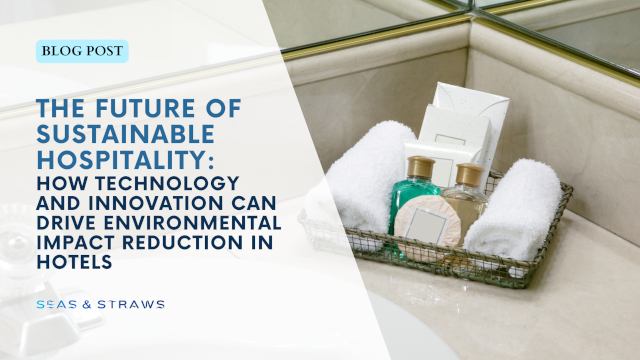- Home
- The Problem with Plastic
- Phthalates in Plastic
phthalates in plastic - invisible, inescapable, harmful
The thing with chemicals is this: You can't see, smell, or taste them. You often don't find them on labels, so you don't know which product contains which chemicals. Yet, they are everywhere and it's almost impossible to avoid them. In plastics, there are two main groups of fairly unhealthy chemicals that you should be aware of. Both are found in hundreds of plastic products and even in the food you eat.
One group is called bisphenol-A or BPA. The other is called phthalates.
What are Phthalates?
Phthalates (read: THAL-ates) are industrial chemical compounds that are widely used to soften plastics or make them more flexible. They are found in numerous plastic products in homes, businesses, vehicles, and hospital devices. They are also added to various personal and cosmetic care products like shampoo, nail polish, scented lotion, perfume, and hairspray. Due to their application, they are referred to as plasticizers.
Because phthalates are added to the plastic polymer structure, they are not chemically bound to it, so they're continuously released into the air or food or liquid.
Where can they be found?
The list is amazingly long. For instance, they are present in a wide range of products from the following industries:
Cosmetic and Personal Care Products
In perfumes, nail polishes, shampoos, hair spray, aftershave, and scented lotions, they help lubricate other substances, help lotions penetrate and soften the skin, and help fragrances last longer. The amount of additives in those products is substantial, and they easily pass through the skin into your bloodstream. The CDC found the highest levels of phthalates in women of childbearing age, presumably because their use of cosmetics.
Chemical hair straighteners
Did you know that chemical hair straighteners also contain phthtalates? Recently, a study published in the Journal of the National Cancer Institute found that the use of these products can cause uterine cancer, breast cancer or uterine fibroids! In fact, women who receive chemical hair straightening more than four times a year may have twice the risk of developing uterine cancer. Many women are unaware of these risks.
That's why the website DrugWatch is trying to raise public awareness about the dangers of chemical hair straighteners with this informative post.
There is even an active lawsuit that more than 40 women who were diagnosed with cancer, endometriosis and uterine fibroids after using chemical hair straighteners are filing right now against L’Oreal, Namaste Laboratories and Godrej Company, among others.
Household products
Many everyday home-based items such as water bottles, food packaging, plastic wraps, plastic containers, wallpapers, flooring, furniture, garden hose, shower curtains, sporting goods, vinyl mini-blinds, printing ink, adhesives and other things made of vinyl or PVC contain phthalate compounds.
Toys and Clothing
Children's plastic and vinyl toys, teethers, bath books, as well as raincoats, rubber boots, and inflatable toys all contain plasticizers.
Processed and Fast Foods
Processed and fast foods often come into contact with a wide range of PVC components like packaging, conveyor belts, vats, and tubes that mostly contain phthalate elements. An Environmental Health study in 2014 showed that processed and fast foods like ice cream, burgers, and milkshakes among other foods had double the probability of being exposed to the toxic compounds compared to non-processed foods.
Seafood
The Plastic Pollution Coalition predicts that oceans will have more plastic waste than fish by 2050. Since phthalates so easily leach from the plastic product, they are likely to contaminate the seawaters, and will eventually be present in seafood. The Farm Project showed that people in Europe ingested approximately 11,000 tiny pieces of plastic found in their seafood in 2017.
Cable and Wire
Phthalates also make the vinyl used to protect wires that run through electronic appliances durable, heat resistant, and less volatile. Such wires run through homes to power bulbs, computers, and other electronic appliances. Due to the flexibility brought by phthalates, they are able to prevent possibly fatal electric accidents.
Building and Construction
Phthalates can be used in a range of building and construction applications to make vinyl surfaces durable and stress-free to maintain. They are particularly useful in the manufacture of durable interior finishes, energy-efficient roofing, sealants, and elastic adhesives. They are also used extensively to make the PVC used in buildings flexible. These PVCs are used as waterproofing membranes, wall coverings, vinyl roofing membranes, electrical cord insulation, resistant flooring, as well as acoustical ceiling surfaces.
Automotive
They are widely used in the automotive industry. The interior trims and seat covers use vinyl that is softened by the compound since it is capable of tolerating high temperatures. The vinyl coverings and elements in vehicles help to avert corrosion caused by water and humid weather conditions. Besides, the elastic vinyl helps to make the vehicles long lasting and cost-effective.
Medical Equipment
Mostly, PVC is widely used in hospital flooring due to its affordability, durability, and ease of cleaning. It also enables the hospital to meet sterility and the set medical safety standards. Other medical equipment that may contain the compounds include storage bags, feeding tubes, catheters, tubing, fluid and blood bags, as well as anesthetic and dialysis apparatus.
Other
- electronics (such as personal computers)
- Air–vapors or dust contaminated with phthalates
- Detergents
- car-care products
- insecticides
- Plastic pipes
How can we be exposed to Phthalates?
Phthalates commonly enter the body through:
Ingestion (swallowing)
- Eating food or drinking water packaged in plastic
- For children, chewing on soft plastic toys or products made with phthalates (like teethers, squeeze toys, or bath books). Babies learn by putting things in their mouth, which makes them especially vulnerable to ingesting phthalates.
- Playing with plastic toys and then putting their hands in their mouth. Many allegedly safe children toys are made primarily with PVC plastics.
Inhalation (breathing)
- Breathing dust in rooms with plastic miniblinds, wallpaper, or vinyl flooring that contain phthalates
Absorption
In cosmetic products like perfumes, lotions, creams and deodorants, they stabilize the fragrance, increase spreadability, and enhance absorption. In nail polish they prevent chipping, in hair spray they prevent stiffness.
The chemicals from these products can be absorbed through the skin and pass into the bloodstream.
Why are Phthalates Dangerous to Humans?
The question of whether phthalates are a danger to humans is not yet fully answered. The extensive evidence available on the effects of phthalates is majorly based on animal research and studies, but there is no conclusive study on its effects on humans. Even though the findings from several animal studies may be related to humans, a more conclusive study is required.
The animal studies show that exposure to the additives can cause developmental defects, fertility (lower sperm production), and anatomical abnormalities related to the male genitalia.
A few studies indicate that they could affect the reproductive hormones particularly in men.
Research on animals has shown an association between phthalate exposure and adverse impacts on the kidney, liver, and the reproductive systems particularly when the exposure happens during the developmental stages of the organism. An animal exposed to the compound while in the womb has shown a considerable decrease in sperm concentration and activity, a higher risk of testicular cancer for males, and early puberty in females.
At least one phthalate was found to be an endocrine disruptor and can cause cancer.
How Can we Avoid Phthalate Products?
Avoiding phthalates might be an impossible task, especially since manufacturers are not required to list the term on the labels. Plasticizers might simply be found under the term "fragrance". However, we can substantially reduce the burden of plastic products that contain the harmful elements in the following ways:
Avoid Plastic Products
Use stainless steel or glass food containers, especially when you heat or store food. You should never heat plastic food containers, even when they are labelled 'microwave-safe'.
Choose water and baby bottles and cups that are made from stainless steel or glass.
Avoid canned foods. Plasticizers may leach from the plastic lining of the can into the food. Fresh fruits and vegetables are still the best food and contain the most nutrients.
Avoid especially vinyl products
Don't buy vinyl (PVC, polyvinyl chloride) products. Instead, choose items made from natural products like wood or bamboo for your flooring and furniture. Choose non-vinyl shower curtains, raincoats and building materials whenever possible. Avoid vinyl toys.
Keep Away from Fragrance
When it comes to personal care products and cosmetics, the word "fragrance" on a label largely means phthalates. As such, consider using natural personal care items like lotions, creams and deodorants only.
Keep your house clean
Dust can be contaminated with plasticizers from wallpapers or floorings.
Conclusion
Phthalates make plastic products flexible, transparent, and long lasting. As such, they are important in our everyday life. However, all the benefits come at a high price to our health and well-being. Identifying the products that contain the harmful compounds is a long stride towards leading a healthy lifestyle free from reproductive or developmental problems and other health issues that may be associated with the chemical elements. Learn to read labels. Ask the manufacturer what chemicals exactly the term 'fragrance' entails. Push health bodies and governments to test and restrict potentially unsafe chemicals.
It is important for you and your loved ones to identify the products that contain phthalates, their potential health risks, and ways they can be avoided.
Want to make your home toxin-free, healthy and sustainable, too, but not sure where to start?
If you want to make your home toxic-free, healthy and safe for your children as well but aren't sure where to start, I'd love to help you! Email me on jana@seasandstraws.com or click here. In the meantime, check out my blog post about my Zero-Waste Coaching, here!











